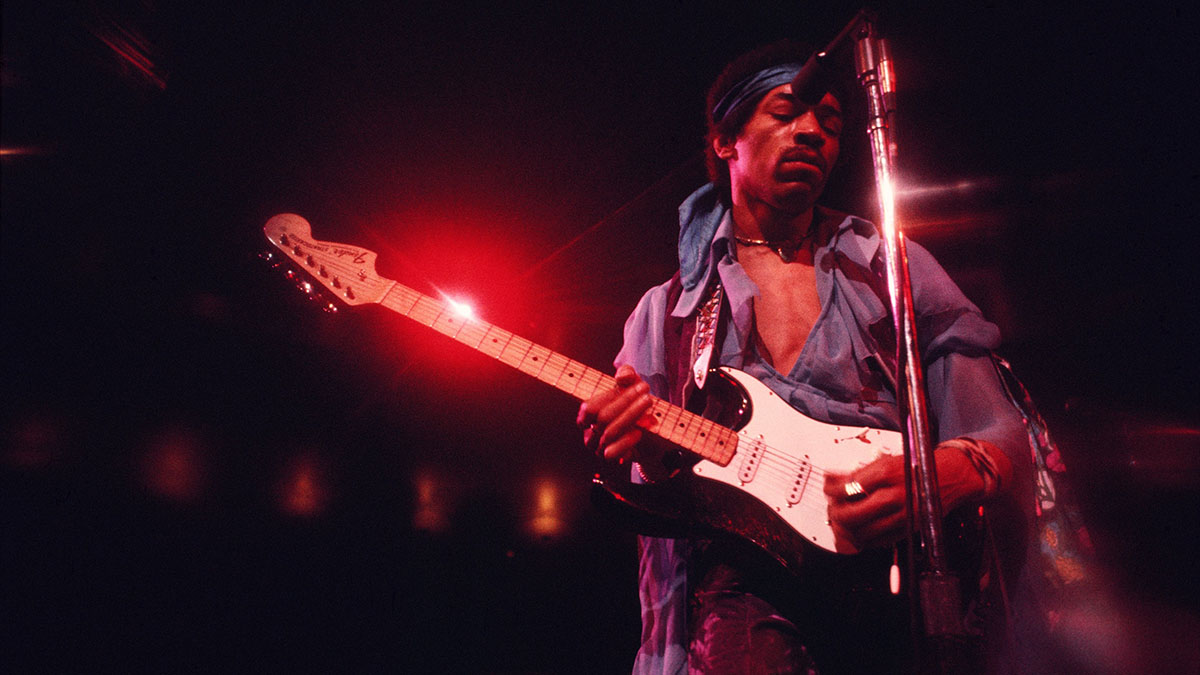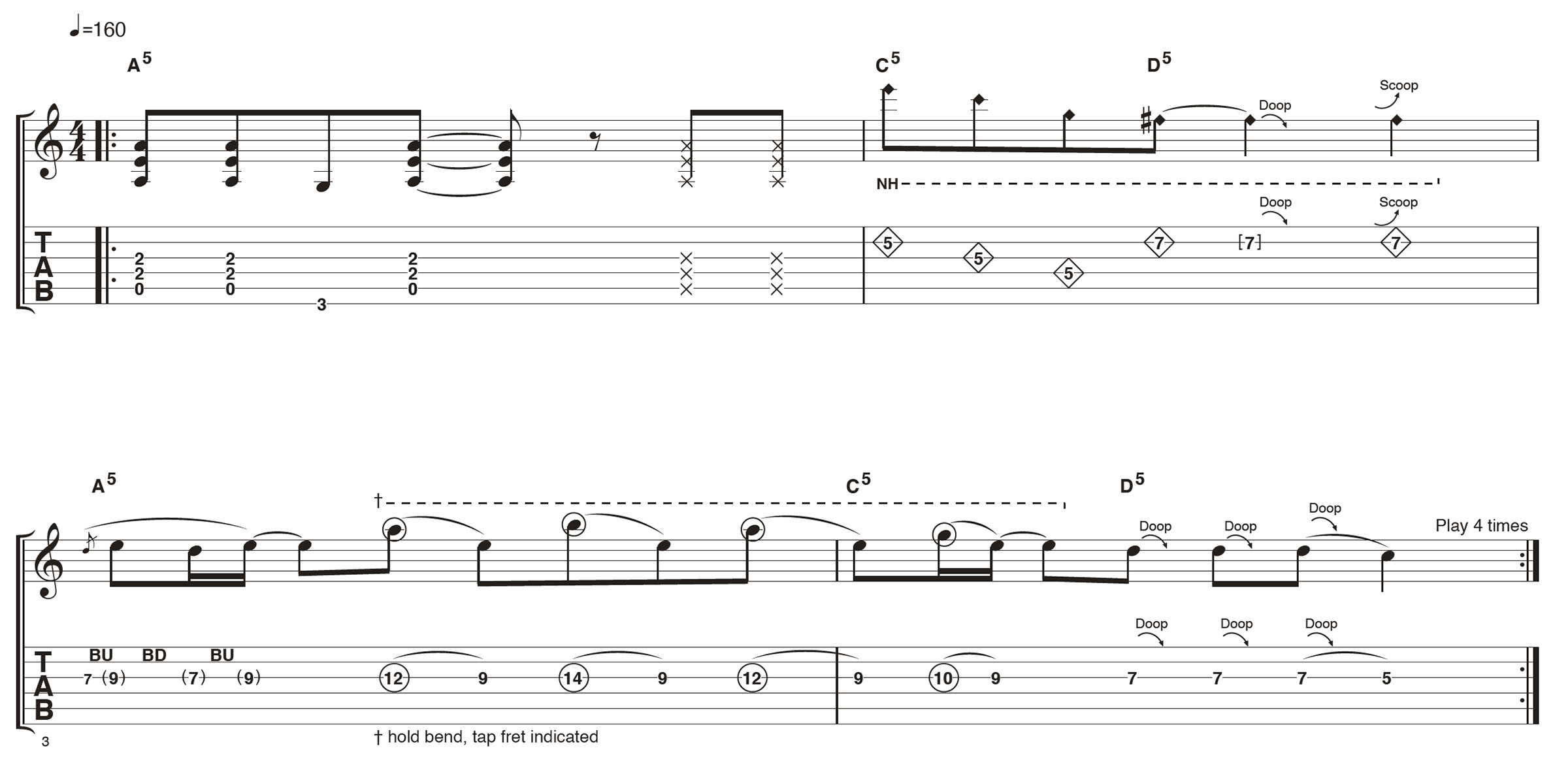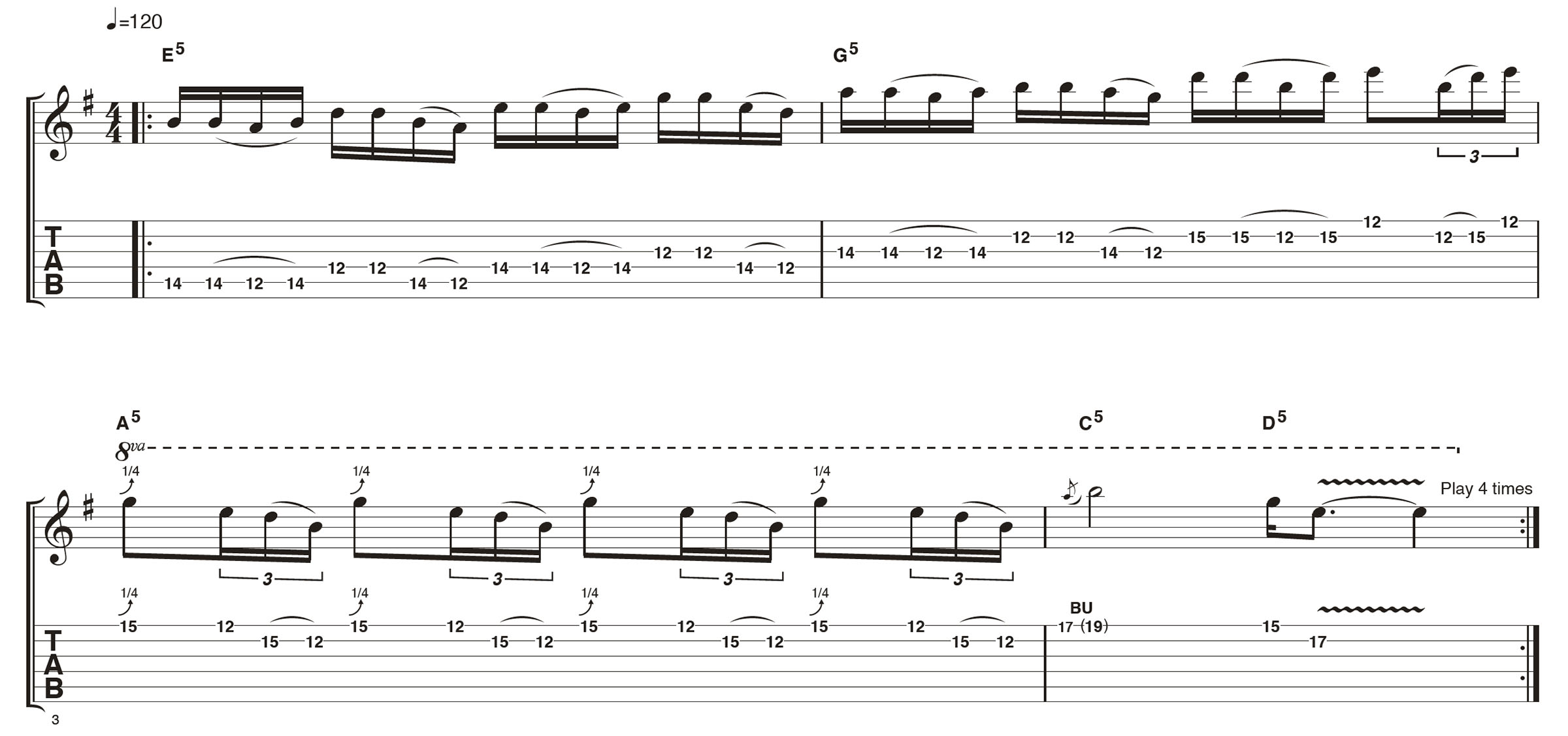Eddie Van Halen, Jimi Hendrix and Jimmy Page are some of guitar’s greatest trailblazers – learn their styles and level up your playing with this rock guitar deep-dive
The styles of Slash, Eric Clapton, Ritchie Blackmore and a suite of other rock gods are placed under the microscope for this comprehensive lesson – tabs and audio included

This month, we take a whistle stop tour through the playing styles of the most influential rock guitarists of all time. We’ll be concentrating our efforts on highlighting their key contributions – and that means you’ll be looking at the techniques that have steered rock and influenced generations of guitarists.
We start off in the 1960s, with players like Jimi Hendrix and Eric Clapton, who took the vocabulary of the blues and supercharged it with Marshall stacks, and no desire to turn them down.
Next up are godfathers of hard rock and heavy metal: Ritchie Blackmore and Jimmy Page. Their influential riffing would go on to inspire generations of heavy rockers – right up to the present day.
Other guitar innovations we look at come in the form of Eddie Van Halen’s tapping technique, Tom Morello's kill switched rhythms and Matt Bellamy’s use of the Whammy pedal.
With a mixture of rhythm and lead, clean and crunch, humbuckers and single coils, there’s something here for everyone…
Example 1. Jimi Hendrix: Fiery fuzz lead
Possibly the single most important innovator in rock, Jimi Hendrix popularized techniques and effects that still inspire guitarists today.
Our example combines a raspy fuzz distortion with a psychedelic sounding Uni-Vibe ‘wobble’. Take care as you switch between the opening E7#9 chord and the high position minor pentatonic licks.
All the latest guitar news, interviews, lessons, reviews, deals and more, direct to your inbox!
Example 2. Eric Clapton: Blues rock phrasing
One of the most influential figures of the 1960s British blues invasion, Clapton was one of the early greats to authentically employ classic blues phrasing in rock.
Typical techniques on show here in our lick are finger vibrato, string-bending and a simple repeating pentatonic phrase – which can serve as a canvas for further experimentation.
Example 3. Jimmy Page: Hard rock riffing
Led Zeppelin riff machine Jimmy Page helped lay the foundations for hard rock, and our example takes inspiration from tracks like Immigrant Song and Whole Lotta Love.
The fast picking on the sixth and fourth strings may take practice, so we recommend starting slowly. The funky 9th chord is heard in some of Zeppelin’s bluesier tracks.
Example 4. Ritchie Blackmore: Virtuoso soloing
One of rock’s first virtuosos, Deep Purple and Rainbow guitarist Ritchie Blackmore incorporated classical influences into his soloing, influencing a new wave of neo‑classical shredders such as Yngwie Malmsteen.
Our example is inspired by songs like Highway Star, and uses fast triad arpeggios that outline the chords.
Example 5. David Gilmour: Melodic phrasing
Pink Floyd's guitarist, David Gilmour, is a master of the melodic lead solo, blending authentic blues phrasing into the band's psychedelic backdrops. Our lick is inspired by clean-tone soloing on classic tracks Shine On You Crazy Diamond and Echoes. Watch out for the trademark Gilmour double bend, here pitched from Bb to C to D.
Example 6. Eddie Van Halen: The all-round technician
After Hendrix, Eddie Van Halen is surely the most influential rock guitarist of all time, pioneering and popularizing techniques that inspired a generation of shredders – and there’s plenty to get your teeth into here! We recommend breaking our example down bar by bar and working on each individual technique.
Example 7. AC/DC: Malcolm Young-style sparse rhythm
Very much the engine room of the band, Malcolm Young’s sparse, driving rhythm guitar work is the core of AC/DC's sound. Our example is inspired by Rock N Roll Train and showcases Malcolm’s ‘less is more’ approach.
The open position powerchords ring out and the inherent sustain of open strings allows for less overdrive to be used.
Example 8. AC/DC: Angus Young-style high octane lead
Here in our Angus Young-inspired lick we’re using the trusty A minor pentatonic scale – as indeed Angus does. Played over the previous riff, this lead line begins in the gaps between the powerchords in a ‘question and answer’ style. It's typical AC/DC stuff and a great way to showcase the interplay between two guitars.
Example 9. Slash: Uptempo pentatonics
Like Angus Young, Slash is a heavy user of pentatonic scales. Our example is inspired by the outro solo in Sweet Child O’ Mine and starts out with a cool way to break up the pentatonic scale for ascending runs.
The first note is double-picked then followed by a pull-off, and the pattern is repeated up through the scale. The final repeating phrase in bar 3 is a classic, and well worth practising slowly at first.
Example 10. Mark Knopfler: Question and answer phrasing
This Dire Straits-style example is inspired by songs like Lady Writer and Sultans Of Swing, where guitarist Mark Knopfler sings a phrase then follows up with a lead fill. The use of the fingers to pick the notes is an essential ingredient for the tone, so pop your pick to one side for this one!
Example 11. Johnny Marr: Indie jangle
At a time when hair metal reigned supreme, guitarists like The Smiths' Johnny Marr provided an indie alternative. Marr used ringing clean arpeggio lines and plenty of overdubs to create intricate soundscapes.
Our example is inspired by tracks like Some Girls Are Bigger Than Others and utilizes fast picking. Employing the ringing open strings where possible helps to provide that trademark jangle.
Example 12. The Edge: Dotted eighth note delays
Inspired by classic U2 songs like Where The Streets Have No Name and With Or Without You, here we're recreating The Edge’s trademark arpeggio soundscapes. At our riff’s 120bpm tempo the delay time should be set to 375ms to create the dotted eighth-note rhythm.
Keep the repeat volume high, preferably with a modulation effect added, and allow roughly six or seven repeats before the sound dies out. If you have a second delay pedal at your disposal, set it to 125bpm (a 16th note).
Example 13. Kurt Cobain: Punky powerchords and dissonance
Grunge giants Nirvana changed the landscape of rock almost overnight, disposing with the excesses of high production '80s rock in favor of a more emotionally direct, alt-rock approach.
Our example, inspired by Smells Like Teen Spirit and Scentless Apprentice, combines punky powerchords with a dissonant unison bend. In true Nirvana style, this bend sounds most effective played slightly out of tune.
Example 14. Pearl Jam: Stone Gossard-style layering
Grunge isn't really a musical genre – and Pearl Jam always sounded substantially different to Nirvana, taking more influence from classic '70s rock than punk and '80s alt bands.
There are some really magical harmonies thanks to Stone Gossard and Mike McCready’s layered guitars, and our example is inspired by songs like Jeremy, Black, and Alive, from the band's debut album, Ten.
Example 15. Pearl Jam: Mike McCready-style layering
Building on our previous riff, here we add in extra layers using a simple four-note repeating pattern which can be played exclusively with downpicking.
Example 16. Tom Morello: Kill switch riff
This riff is inspired by songs like Rage Against The Machine’s Know Your Enemy, where a kill switch is employed to create rhythmic effects with a metronome-like stuttering quality.
No kill switch? No problem! Use a two-pickup, two-volume-knob guitar (such as a Les Paul Standard), lower one volume knob and use the selector switch to toggle between the active and silent pickups.
Example 17. Matt Bellamy: Neo-classical chord progressions
This classical-style chord progression is a tried-and-tested Bellamy trick and you can hear similar ideas in Muse songs New Born and Plug In Baby.
We're using a Whammy pedal set to one octave up (though you can practice without one) and playing tremolo picked arpeggios to outline the progression.
There's an implied chromatic melody running through the progression, starting on a B note in the Em chord before following C, C#, and D with the subsequent chords.
Jon Bishop is a UK-based guitarist and freelance musician, and a longtime contributor to Guitar Techniques and Total Guitar. He's a graduate of the Academy of Contemporary Music in Guildford and is touring and recording guitarist for British rock 'n' roll royalty Shakin’ Stevens.


















